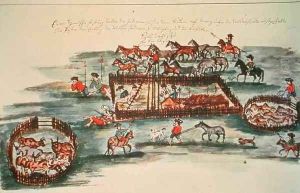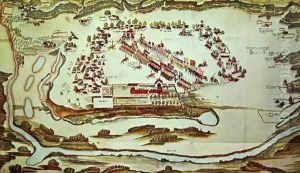Florian Paucke Paintings
Florian Paucke was a Jesuit missionary and artist born in 1719 in Schlesien, which at the time was part of the Holy Roman Empire and is now in modern-day Poland. He is best known for his detailed illustrations and written accounts of the indigenous peoples and landscapes of South America, particularly the region of the Gran Chaco in what is now Argentina. Paucke joined the Society of Jesus and was sent as a missionary to the Americas, where he spent significant time among the indigenous populations, especially the Mocoví people.
His most notable work is 'Hacia allá y para acá,' a manuscript that combines both textual and visual documentation of his experiences and observations. Paucke's illustrations are valuable historical documents that provide insight into the customs, clothing, and ways of life of the indigenous communities he encountered. His drawings are characterized by their attention to detail and the ethnographic precision, which makes them an important source for the study of South American indigenous cultures of the 18th century.
Although Paucke was primarily a missionary, his contributions to the understanding of the indigenous cultures of South America are of significant historical and anthropological interest. His works provide a unique European perspective of the time, often depicting scenes of daily life, religious practices, and the natural environment with a sense of curiosity and respect. Paucke died in 1780, but his legacy endures through his detailed records, which continue to be studied and appreciated by historians, anthropologists, and art historians alike.

